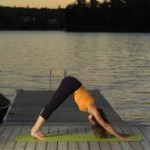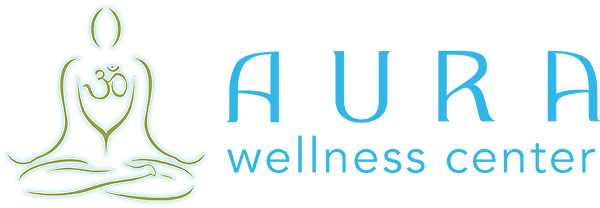 By Sangeetha Saran
By Sangeetha Saran
If you’ve ever stepped into a yoga class, chances are you’ve encountered the downward-facing dog pose. This iconic posture is more than just a staple of yoga sequences; it’s a powerful tool for stretching and strengthening your body. Picture this: an invigorating position that opens up your shoulders elongates your spine, and engages your core while leaving you feeling refreshed and centered. Whether you’re new to yoga or have been practicing for years, mastering the Downward Facing Dog Pose can elevate your practice to new heights. In this ultimate guide, we’ll delve into everything there is to know about this transformative pose—from its myriad benefits to tips on perfecting it.
Of all the various stances of Yoga, the Downward-Facing Dog, or the Adho Mukha Svanasana, is one of the most well-known and for good reason! Downward Dog offers numerous health benefits, and is fairly simple to learn, which makes it a favorite Yoga pose amongst beginners, and advanced practitioners.
How Is Adho Mukha Svanasana Done?
With your mat, lie on the ground face down with your hands placed under your shoulder joints and your knees tucked under your hips; tops of toes should be touching the ground with the soles facing the ceiling.
Inhale deeply, then as you exhale, push your hands and feet (flip the soles down on the mat) into the mat, while slightly bending your knees to allow your torso to raise slightly above the ground. Concentrate on the lengthening of the spine, which should be stretched in a fluid motion; it is essential this is done slowly and correctly to prevent injury.
Inhale deeply, then exhale, pushing into the ground more with your hands and feet (your feet might not be completely flat on the ground) to allow yourself to form an upside-down “V” with your buttocks being the vertex. The hands should be completely straight.
Be sure to look at the mat as this elongates the spine further to include your neck. Inhale and exhale deeply and feel the stretching of the spine especially in the lower back. When finished, exhale and return to a resting position such as the Child’s Pose to act as a counter stretch.
Warnings for Adho Mukha Svanasana
Fortunately, the Downward-Facing Dog stance is simpler than the majority of Yoga stances. However, it is important not to rush into the pose as the sudden shift of movement can be bad for the back. Also, make sure to focus on breathing so that progression is done during exhales. Inhaling causes the chest to expand and if the spine is elongating at the same time, it can create extra pressure in the back muscles.
Benefits of Adho Mukha Svanasana
This stance has numerous benefits to the mind and body, which include:
1. Promotes relaxation of the muscles that run along the entire spine, delivers more oxygen to the brain and energizes the body as a whole.
2. Increases circulation in the feet, hands and knees as well as other areas prone to arthritis.
3. Opens the sinuses and reduces congestion during colds.
4. Strengthens the muscles of the arms and legs.
5. Releases concentrated points of tension in the back, reducing sensitive areas and knots.
6. Stretches the muscles of the calves and hamstrings.
Additional Benefits of Practicing Downward Facing Dog Pose
The Downward-Facing Dog Pose is a powerhouse in yoga. It stretches and strengthens various muscle groups, bringing flexibility to the spine, hamstrings, and calves.
This pose invigorates the body by improving circulation. More blood flow means more oxygen for your muscles and brain — perfect for rejuvenating those long days.
It also aids digestion. The gentle inversion can stimulate abdominal organs, promoting better digestive health.
Another perk of this pose is mental clarity. As you focus on your breath while holding it, stress melts away. This mindfulness boosts overall mood and mental well-being.
Practicing Downward Facing Dog enhances core strength. Engaging your torso helps build stability throughout other poses in your routine. Embrace these benefits to elevate physical fitness and emotional balance on the mat!
Common Mistakes and How to Avoid Them
Many people make a few common mistakes when practicing the downward-facing dog pose. One frequent error is collapsing the chest instead of lifting it. This can limit the stretch and strain your shoulders.
Another issue arises with the feet. Some practitioners keep their heels too high off the ground, which diminishes its restorative benefits. Pressing through your heels helps deepen that stretch in your hamstrings.
Additionally, be mindful of how you position your hands. If they’re too far forward or backward, they can cause discomfort in your wrists and shoulders.
Remember to engage your core. A weak core can cause misalignment throughout the pose and reduce stability. Focus on pulling your belly button toward your spine for better support as you hold this iconic posture.
Modifications for Beginners and Advanced Practitioners
For beginners, the downward-facing dog pose can feel challenging. To ease into it, start with bent knees. This allows your spine to lengthen while keeping tension out of your back.
Another great modification is using blocks under your hands. This brings the ground closer and supports proper alignment without strain.
Advanced practitioners might explore more profound variations. Try lifting one leg into a three-legged dog for an added challenge that engages the core and enhances balance.
Another option is transitioning into a plank or chaturanga from a downward-facing dog. This adds strength training elements while maintaining flow in your practice.
Always listen to your body regardless of experience level. Adjustments can help you find comfort and improve your technique, making every session rewarding as you progress through each stage of yoga practice.
Variations of Downward Facing Dog Pose
Downward Facing Dog Pose offers a wealth of variations to keep your practice fresh and challenging. One popular modification is the Three-Legged Dog. This involves lifting one leg high, engaging your core while maintaining stability in the arms and shoulders.
Another variation is Puppy Pose, which focuses on stretching the spine and opening the chest. It’s perfect for those looking to deepen their backbend without straining.
For added strength, try transitioning into Plank from Downward Dog. This engages your core muscles more intensely, building endurance over time.
If you want a restorative option, Child’s Pose provides a gentle counterbalance after practicing Downward Facing Dog.
These variations enhance flexibility and strengthen different muscle groups throughout your body. Explore these options to find what resonates most with you during each session!
Incorporating Downward Facing Dog Pose into a Yoga Routine
Integrating Downward Facing Dog Pose into your yoga routine can significantly enhance your practice. This pose serves as a transitional posture, seamlessly linking various sequences together.
Consider placing a Downward-Facing Dog between standing poses like Warrior I and II. It helps you ground yourself while allowing for a rest before diving back into more challenging postures.
You might also use this pose during vinyasa flows. Transitioning from Plank to Downward Dog builds strength and stability. Feel the stretch in your spine while engaging your core.
If you’re setting up for seated postures, add it at the beginning or end of your session. It opens the shoulders and stretches the legs, preparing you for deeper seated positions.
Experiment with timing, too; hold it longer on days when you need extra release, or cycle through quickly on energizing days to keep moving dynamically through your flow.
Precautions and Tips for a Safe Practice
Practicing the downward-facing dog pose requires awareness. Listen to your body and respect its limits.
If you feel any sharp pain, ease out of the position. Discomfort is a signal that something may not be correct.
Ensure your wrists are aligned under your shoulders. This alignment helps prevent strain and injury during practice.
If needed, utilize props like yoga blocks, chairs, or straps. These tools can provide stability and support as you work on flexibility.
Remember to engage your core throughout the pose. A strong core enhances balance and protects your lower back.
Breathe deeply while holding the pose, allowing oxygen to flow freely in your body. Focus on calming breaths rather than rushing through it.
If you’re new to this pose, try practicing with a qualified instructor. They can offer personalized advice tailored to your unique needs.
Conclusion
The downward-facing dog pose is a foundational posture in yoga that offers numerous physical and mental benefits. You can enhance your practice and overall well-being by understanding its significance, practicing it correctly, and integrating it into your routine. Whether you’re just starting or looking to deepen your experience, this pose invites you to explore strength, flexibility, and mindfulness.
Remember to listen to your body and make adjustments as needed. With patience and consistency, the downward-facing dog pose can become a powerful tool for cultivating balance in mind and body. Embrace the journey of exploration within each practice session; every moment on the mat counts toward growth.
© Copyright – Aura Wellness Center – Publications Division
Do you want to become a mindfulness meditation teacher?
To see our selection of Yoga instructor courses and continuing education courses, please visit the following link.
https://aurawellnesscenter.com/store/
Click here to see our online Yoga Nidra teacher training course.
Are you an experienced teacher looking for YACEP credits or continuing education?
Subscribe to Our Newsletter for Special Discounts and New Products
Related Resources
52 Essential Principles of Yoga Philosophy to Deepen your Practice
by Rina Jakubowicz
A Relaxing Way to De-stress, Re-energize, and Find Balance
by: Gail Boorstein Grossman
YOGA: THE PATH TO HOLISTIC HEALTH
by B.K.S. Iyengar
TEACHING YOGA: Essential Foundations and Techniques
By Mark Stephens
See our testimonials to find out what our graduates have to say about teaching yoga sessions and our selection of affordable yoga teacher training intensive courses.

While practicing Downward Dog Pose, it is important not to rush into the pose as the sudden shift of movement can be bad for the back. Thanks for posting this valuable article.
Thanks for sharing this informative post.